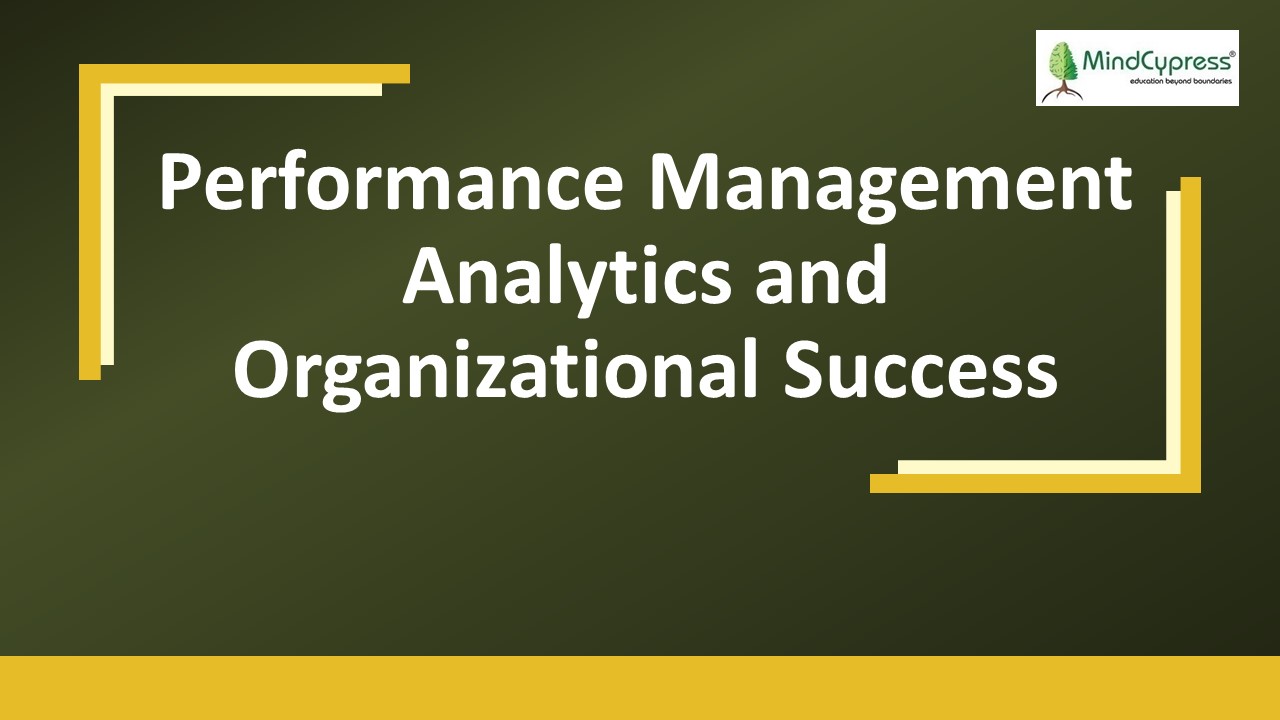Performance Management Analytics and Organizational Success - PowerPoint PPT Presentation
Title:
Performance Management Analytics and Organizational Success
Description:
The success of an organization in this fast-paced business world is highly dependent on efficient performance management of employees. – PowerPoint PPT presentation
Number of Views:0
Date added: 10 April 2024
Slides: 12
Provided by:
mindcypressusa
Category:
How To, Education & Training
Tags:
Title: Performance Management Analytics and Organizational Success
1
Performance Management Analytics and
Organizational Success
2
Introduction
- The success of an organization in this fast-paced
business world is highly dependent on efficient
performance management of employees. An
organization faces increased challenges when it
does not have a systematic and robust approach
for performance management. In this blog, we talk
about what performance management analytics is
and why it is important for organizational
success.
3
What is Performance Management Analytics?
- Performance Management Analytics uses credible
data to analyze, measure, understand and enhance
how an individual/team is doing their tasks. It
involves collection of information pertaining to
productivity, goals, and employee behavior.
Organizations use it for making data-driven
decisions that help formulate strategies and
plans to increase the performance of employees.
4
What is the role of Performance Management
Analytics in an organization?
- Enhanced Decision-Making
- Improving Employee Engagement and Retention
- Optimizing Performance and Productivity
- Aligning Performance with Business Objectives
- Driving Continuous Improvement
- Performance Management Analytics for
Organizational Success
5
Enhanced Decision-Making
- Employee performance management analytics
provides valuable data and insights to senior
professionals to make informed decisions. The
decisions pertain to the management of workforce,
allocation of resources and strategic planning.
Analyzing Key Performance Indicators (KPIs) such
as retention rates, employee productivity,
engagement, etc., can help identify the areas for
continuous improvement. It enables them to
identify trends and patterns as well.
6
Improving Employee Engagement and Retention
- Retention and employee engagement are vital
components of an organization's success.
Organizations may evaluate and quantify employee
engagement levels and pinpoint variables
impacting job satisfaction. They can take
proactive measures to enhance employee experience
and retention with the help of performance
management analytics. Organizations may establish
a productive workplace that encourages employee
commitment and loyalty by learning what motivates
employee engagement and resolving any underlying
problems.
7
Optimizing Performance and Productivity
- Organizations may identify top performers,
pinpoint areas for growth, and track and assess
employee performance against predetermined goals
and targets with the use of performance
management analytics. Through the provision of
real-time feedback and performance insights,
organizations may enable their workforce to
assume responsibility for their work, establish
significant objectives, and persistently pursue
excellence. Increased output, effectiveness, and
general organizational performance result from
this.
8
Aligning Performance with Business Objectives
- Organizations can better connect team and
individual performance with overall business
goals and strategic priorities by using
performance management analytics. Establishing
unambiguous performance objectives and
implementing them across the entire organization
can help companies make sure that every worker's
efforts are directed toward attaining overall
business success. Organizations can use
performance analytics to monitor their progress
toward strategic goals, spot performance gaps,
and make necessary strategy adjustments to stay
on course.
9
Driving Continuous Improvement
- Performance management analytics helps
organizations to embrace a culture of continuous
improvement. It offers practical insights into
performance trends, areas of strength, and
opportunities for progress. Organizations can
address performance issues and promote continuous
improvement throughout the company by identifying
best practices, drawing lessons from the past,
and putting targeted interventions into place
through the analysis of performance data over
time.
10
Performance Management Analytics for
Organizational Success
- Organizations must use performance management
analytics to promote organizational success in
the cutthroat business environment of today. They
may optimize performance and productivity, drive
continuous improvement, boost employee engagement
and retention, and align performance with
business objectives by leveraging the power of
data-driven insights. In the digital era, these
analytics will continue to be a vital tool for
enabling organizational success as companies
change and adapt to shifting market conditions.
Want to learn more about this topic and other
skills and knowledge that are essential in the HR
industry? MindCypress is an educational platform
that provides top professional courses
including HR Analytics Online Training. The
training is meant to equip professionals with the
latest knowledge and skills of the industry.
11
Ending Slide Resource
- https//www.mindcypress.com/blogs/human-resource-
management/performance-management-analytics-and-or
ganizational-success































